Knowing that the biceps has two main functions—elbow flexion and forearm supination—it’s essential to train both of them if you want to achieve optimal bicep development.
That’s why the best bicep workouts always have you curl with your palms facing up—it just places more tension on the biceps brachii.
But there’s more to maximizing your arm development than just building your biceps. You need to grow your brachioradialis and brachialis muscles if you want your arms to look big and muscular from every angle.
But training your upper arms from every conceivable angle can take a ridiculous amount of time. So we created this quick bicep workout to fast-track your results. Even though there are only four exercises, this routine blasts your biceps from different angles and with various rep ranges to ensure that you’re stimulating robust bicep hypertrophy.
Rest 1-2 minutes between sets and leave 1-3 reps in the tank on each set. While we recommend sticking to straight sets for simplicity’s sake, you can also perform these exercises as a biceps circuit if you’re trying to improve your work capacity (although this training style will mean lightening the weight).
1. Close grip EZ bar curl — 3-4 sets of 6-10 reps
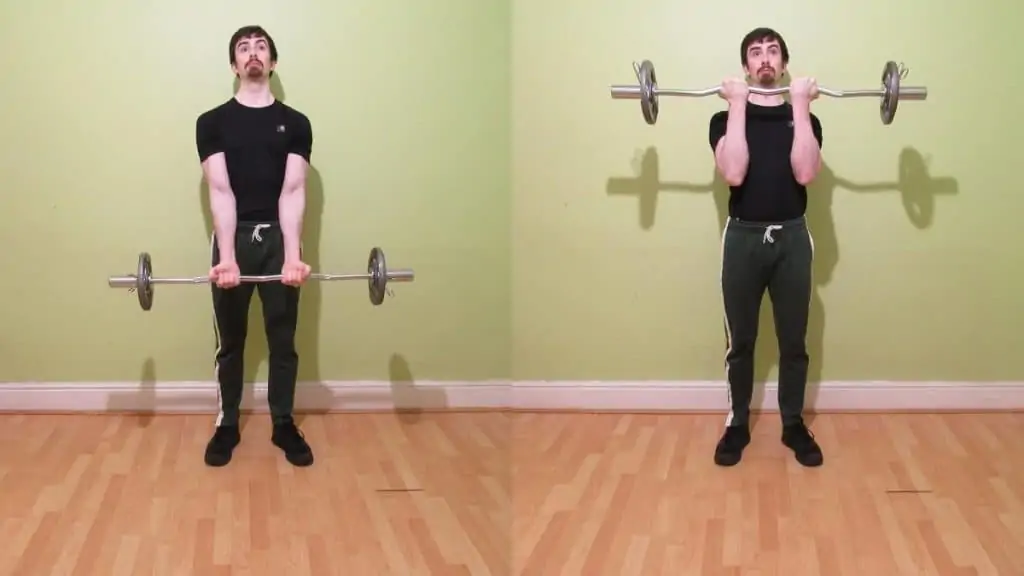
Performing close grip bicep curls with an EZ bar emphasizes the long (outer) head of your biceps while removing any unnecessary strain from your wrists and forearms.
This is so because EZ bars have semi-supinated grips rather than fully supinated grips like straight bars. As such, lifting easy curl bars reduces your injury risk because these bars don’t put your wrists in any compromising positions.
Curling with a narrow grip shifts the emphasis of the exercise onto the outer muscle fibers of your biceps—providing that you don’t let the bar drift too far in front of your body. So keep the bar close to your torso when you curl if you want to focus on the long head of your biceps.
- Load some weights onto either side of an EZ bar.
- Grab the bar with a close-underhand grip.
- Curl the bar toward your chest by flexing your biceps.
- Keep lifting the weight until your forearms and biceps make firm contact with each other.
- Hold the peak contraction for a moment.
- Lower the bar in a controlled manner until your elbows reach full extension.
2. Inner bicep curl — 3-4 sets of 8-12 reps
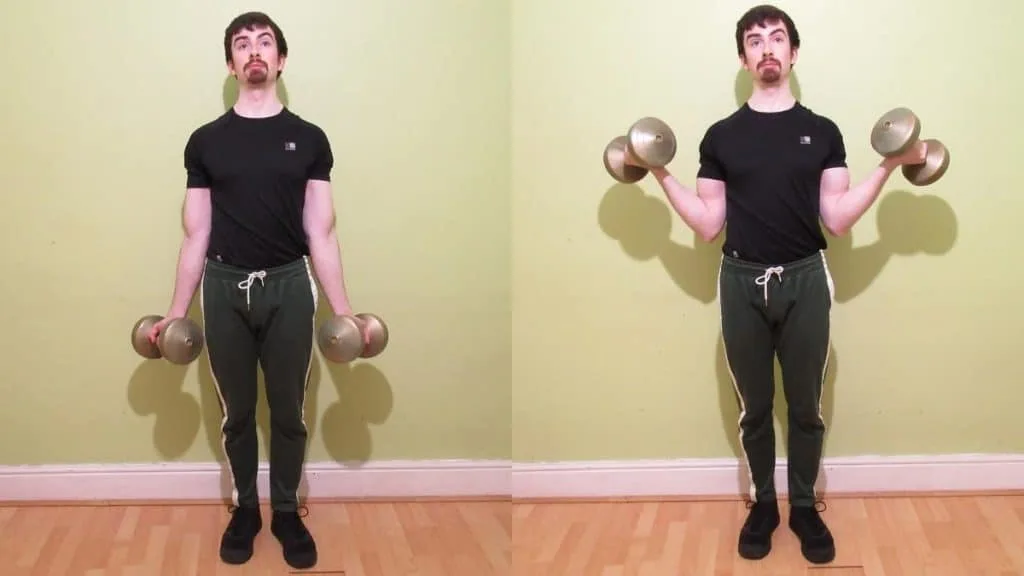
Now that you’ve trained the outer part of your biceps, it’s time to focus on the short head with the inner bicep curl.
This unconventional dumbbell exercise produces a stronger peak contraction than regular curls by making you curl with your elbows braced against your lats. So in this respect, you’re essentially using your lats in the same way that you’d use your leg in a concentration curl—hence the intense peak contraction.
The trick is to really supinate your wrists hard at the top of each rep. Try and rotate the weights away from your body without moving your shoulders. Remember, the biceps supinate the forearms, not the shoulders, so you want all the rotation to come from your hands and wrists.
You can also try our biceps superset workout if you’re more advanced and are seeking a quick bicep workout to pump up your arms.
- Hold a pair of weights by your sides with a supinated grip.
- Externally rotate your shoulders as much as you can so that your elbows are now pressing into your sides.
- Curl the dumbbells toward your shoulders while keeping your elbows still.
- Supinate your wrists forcefully (turn your pinky fingers away from your body) at the top of the rep as your forearms push up against your biceps.
- Hold the contraction for a moment.
- Lower the weights back down to your sides under control.
3. Zottman curl — 3-4 sets of 10-15 reps
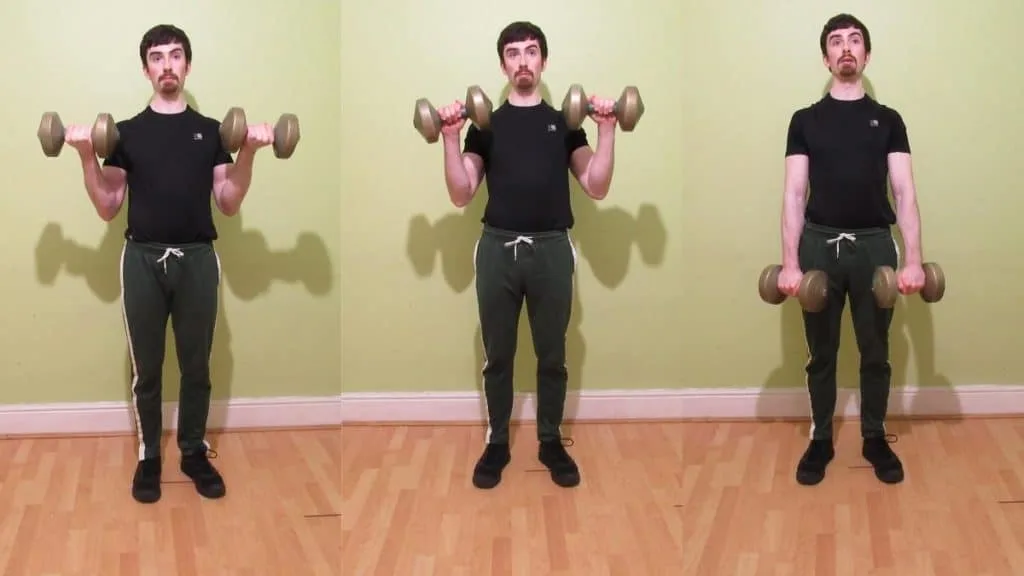
When you use the proper Zottman curl form, you can work three major arm muscles in one convenient exercise. As such, Zottman curls are the ideal movement for a fast bicep workout.
Since you can curl more weight with a supinated grip than with a pronated grip, you’re using the strength of your biceps during the concentric phase of the rep to overload your brachialis and brachioradialis during the eccentric part of the rep.
In other words, if you were using a reverse grip in both parts of the rep, then you wouldn’t be able to overload your brachialis and brachioradialis with as much resistance during the eccentric phase because they wouldn’t be able to lift as much weight as you biceps can during the concentric part.
- Hold a pair of dumbbells by your sides with a thumbless-underhand grip.
- Curl the weights toward your shoulders while keeping your elbows stationary.
- Rotate your hands into a pronated (palms-down) position once your biceps and forearms make firm contact at the top of the rep.
- Lower the dumbbells back down with this overhand grip.
- Switch back to the original underhand grip once your elbows reach full extension.
4. Bicep 21s — 2-3 round of 7/7/7 reps
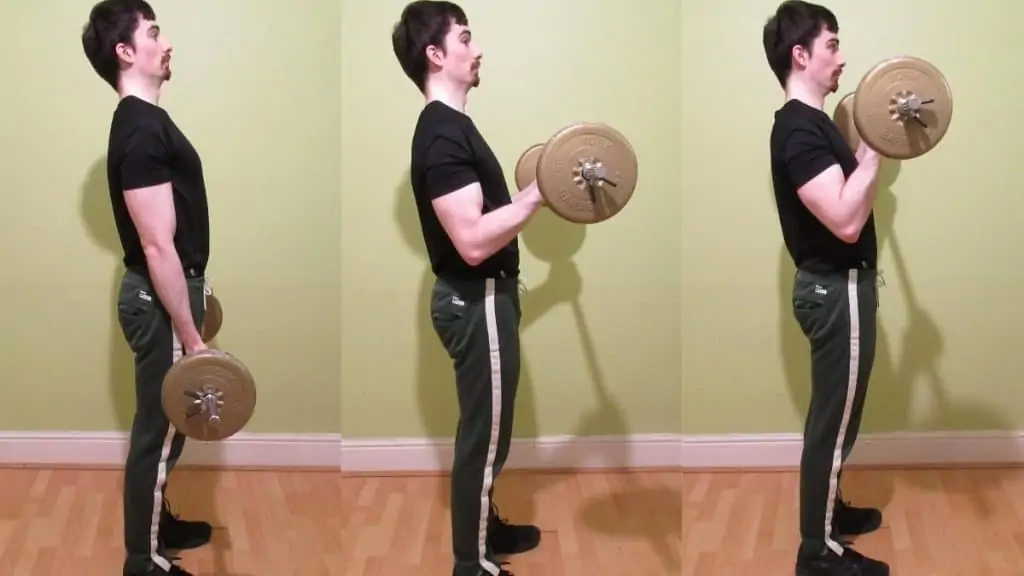
You’re going to end this quick biceps workout with dumbbell 21s to fatigue any remaining muscle fibers. Since 21s are so intense and because the reps are higher, you’ll be doing fewer sets during this final exercise.
You can also perform 21s with a barbell if that’s more convenient for you. I’ve recommended dumbbells here so that you can ensure that each of your biceps is receiving roughly equal work.
- Hold a pair of dumbbells by your sides with an underhand grip.
- Curl the weights halfway up 7 times—stop just before your elbows form a 90-degree angle.
- Then perform 7 reps in the top half of the rep—from 90-degrees until you can’t lift the weights any higher.
- Finish the set by performing 7 full repetitions.
In conclusion
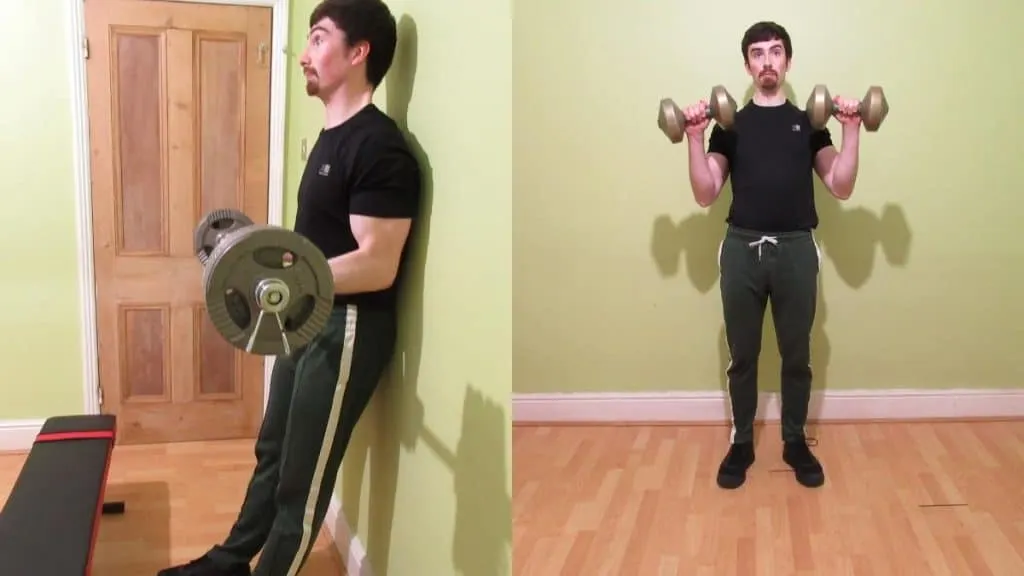
You can do this quick bicep workout anywhere because all you need is a pair of dumbbells, a few weights, and a bar. So it doesn’t require any special equipment, such as cables, like our 30 minute bicep workout does.
This routine is a great intermediate and beginner bicep workout because it has plenty of training volume to stimulate hypertrophy. However, since you should ideally be resting 1-2 minutes between sets, you also won’t risk overtraining by reaching muscular failure too soon in the workout.
Try and leave 1-2 reps in the tank on each set (except for 21s). While training to failure will give you a slightly better pump, it’ll make you significantly weaker on your following sets. This means that you’d need to lift lighter and thus have to perform less total training volume, which isn’t ideal for hypertrophy training.

